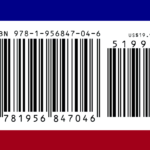Introduction: The Future of Connectivity
In the rapidly evolving landscape of digital technology, Twñcel emerges as a groundbreaking innovation poised to transform the way we connect and interact with the digital world. As we witness the limitations of current digital technologies, the need for a more advanced and efficient approach becomes evident. This article delves into the world of Twñcel, exploring its potential applications and the profound impact it could have on the future of technology.
Understanding Twñcel
Defining Twñcel
Twñcel represents a new paradigm in digital connectivity, designed to overcome the constraints of existing technologies. Unlike traditional methods, Twñcel leverages cutting-edge principles to deliver enhanced performance and versatility. It is a sophisticated technology that integrates advanced protocols and innovative architectures to create seamless and robust connections.
Key Features and Benefits
Twñcel is distinguished by several key features:
- High-Speed Connectivity: Offers unprecedented data transfer rates, significantly faster than current technologies.
- Enhanced Reliability: Provides a more stable connection with reduced latency and fewer interruptions.
- Scalability: Designed to accommodate a growing number of devices and users without compromising performance.
- Energy Efficiency: Utilizes advanced techniques to minimize power consumption, extending the battery life of connected devices.
These features collectively contribute to a superior digital experience, addressing many of the limitations faced by existing technologies.
Comparison to Existing Technologies
Compared to traditional digital connectivity methods, Twñcel offers several advantages:
- Speed: While current technologies like 4G and Wi-Fi have limitations in speed and bandwidth, Twñcel promises significantly faster data transfer rates.
- Reliability: Traditional networks often suffer from connectivity issues and latency. Twñcel aims to provide a more consistent and reliable connection.
- Capacity: Twñcel’s scalable design supports a larger number of connected devices, making it ideal for high-density environments.
This comparison highlights Twñcel’s potential to redefine digital connectivity and address existing challenges.
Twñcel in Action: Real-World Applications
Consumer Electronics
In the realm of consumer electronics, Twñcel can revolutionize how we interact with smartphones, tablets, and other devices. The technology enables:
- Seamless Streaming: Improved streaming quality for video and audio content, with minimal buffering.
- Enhanced Gaming Experience: Reduced latency and faster response times for online gaming, providing a more immersive experience.
- Smart Device Integration: Better connectivity between various smart devices, enhancing their functionality and ease of use.
IoT and Smart Homes
Twñcel has the potential to significantly impact the Internet of Things (IoT) and smart home environments:
- Improved Device Communication: Facilitates more efficient communication between IoT devices, leading to smarter and more responsive home automation.
- Expanded Connectivity: Supports a larger number of IoT devices simultaneously, making it ideal for complex smart home setups.
- Enhanced Security: Offers advanced security features to protect smart home networks from potential threats.
Industrial and Enterprise Applications
In industrial and enterprise settings, Twñcel can drive significant advancements:
- Manufacturing: Enhances automation and real-time monitoring in manufacturing processes, leading to increased efficiency and reduced downtime.
- Healthcare: Improves the connectivity of medical devices and health monitoring systems, enabling better patient care and data management.
- Transportation: Supports advanced connectivity solutions for transportation systems, including real-time tracking and communication.
These applications demonstrate Twñcel’s versatility and potential to transform various sectors.
The Technology Behind Twñcel
Technical Aspects
The technology behind Twñcel involves several key components:
- Advanced Protocols: Utilizes new communication protocols that enhance speed and reliability.
- Innovative Architecture: Features a novel network architecture that improves scalability and efficiency.
- Enhanced Encryption: Incorporates advanced encryption techniques to ensure data security.
These technical aspects form the foundation of Twñcel’s capabilities and benefits.
Advantages and Challenges
Advantages:
- Increased Efficiency: Provides faster and more reliable connections.
- Scalability: Adapts to growing network demands.
- Energy Efficiency: Reduces power consumption.
Challenges:
- Deployment Costs: Initial setup and deployment may require significant investment.
- Compatibility Issues: Integrating Twñcel with existing technologies could present challenges.
- Technical Complexity: The advanced nature of Twñcel may require specialized knowledge for implementation.
Future Developments
Looking ahead, Twñcel research and development are focused on:
- Expanding Applications: Exploring new use cases and industries.
- Enhancing Performance: Continuously improving speed, reliability, and efficiency.
- Addressing Challenges: Finding solutions to deployment and compatibility issues.
The Impact of Twñcel on Society
Economic Implications
The adoption of Twñcel could have significant economic impacts:
- Growth Opportunities: Creates new business opportunities and markets.
- Cost Efficiency: Potentially reduces costs associated with data transfer and connectivity.
- Job Creation: May lead to job creation in technology and related sectors.
Social and Cultural Changes
Twñcel’s influence extends to social and cultural aspects:
- Communication: Enhances digital communication, making it more accessible and efficient.
- Lifestyle Changes: Facilitates the adoption of new technologies and services in daily life.
- Social Interactions: May change how people interact with technology and each other.
Ethical Considerations
Ethical considerations surrounding Twñcel include:
- Privacy: Ensuring that advanced connectivity does not compromise user privacy.
- Security: Addressing potential security risks associated with new technology.
- Accessibility: Ensuring equitable access to Twñcel’s benefits across different demographics.
Twñcel: A Glimpse into the Future
The Potential of Twñcel
Twñcel holds immense potential for shaping the future of digital connectivity. Its advanced features and applications suggest a transformative impact on technology and society.
Challenges and Opportunities
While Twñcel presents exciting opportunities, it also faces challenges:
- Adoption Rates: The pace at which Twñcel is adopted will influence its success.
- Technological Evolution: Continuous advancements in technology will shape Twñcel’s development.
You May Also Like: Explore the Holistic Approach at chscampamp.org
Conclusion
In summary, Twñcel represents a revolutionary advancement in digital connectivity. Its potential applications and impact on various sectors highlight its significance as a transformative technology. As we look to the future, Twñcel’s continued development promises to redefine the landscape of digital connectivity, offering new opportunities and solutions to existing challenges.
FAQs
1. What is Twñcel?
Twñcel is an advanced technology designed to enhance digital connectivity, offering faster speeds, greater reliability, and improved efficiency compared to traditional methods.
2. How does Twñcel compare to existing technologies?
Twñcel outperforms traditional technologies like 4G and Wi-Fi in terms of speed, reliability, and capacity, providing a more robust and scalable solution.
3. What are the key applications of Twñcel?
Twñcel can enhance consumer electronics, improve IoT and smart home connectivity, and revolutionize industrial and enterprise applications.
4. What are the main technical aspects of Twñcel?
Twñcel utilizes advanced communication protocols, innovative network architecture, and enhanced encryption techniques to deliver its performance benefits.
5. What are the potential challenges associated with Twñcel?
Challenges include deployment costs, compatibility issues with existing technologies, and the need for specialized knowledge for implementation.










